Discover the Beauty of Hovingham, Cawton, and Gilling East on this Howardian Hills Walk
Embark on a delightful 13-mile Howardian Hills walk, as you follow a course through charming villages and picturesque countryside. This route will take you from Hovingham to Cawton, Gilling East, and back again, providing an excellent day out in the beautiful Howardian Hills Area of Outstanding Natural Beauty.
Begin your walk in Hovingham, a quaint village nestled in the heart of the Howardian Hills, just a few miles south-east of Helmsley on the B1257. Set off westward along the Ebor Way, a scenic walking trail that offers stunning views of the surrounding countryside. As you stroll along this pleasant path, you’ll pass the beautiful Hovingham Spa House, a splendid example of local architecture.
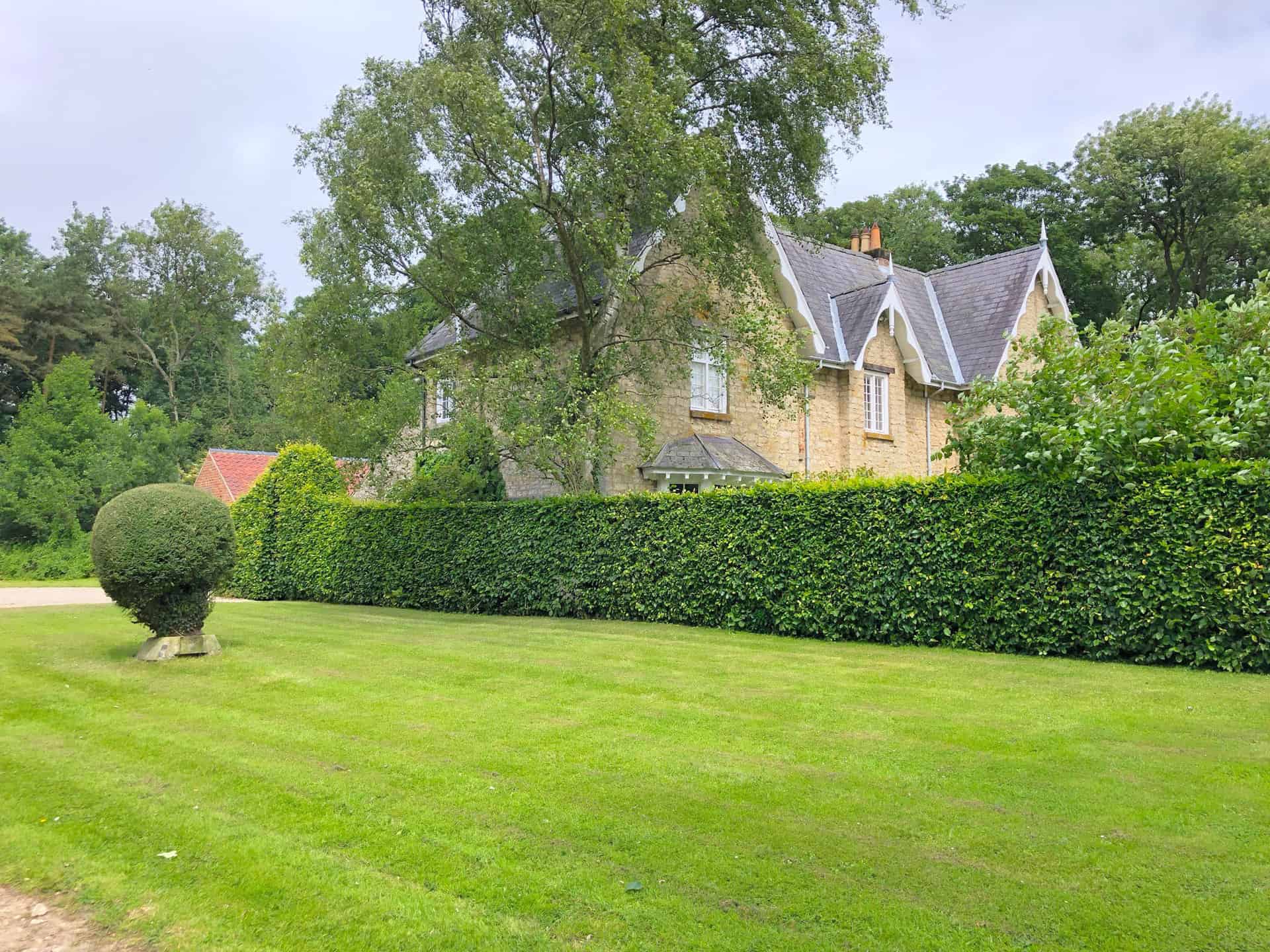
Continuing along the Ebor Way, make your way towards the charming village of Cawton. Once you’ve arrived, head further west via a minor road, leading you towards the pretty village of Gilling East. Here, you’ll want to take a slight detour to visit the Church of the Holy Cross, a historical gem that adds a touch of history to your Howardian Hills walk. After exploring the church, proceed westward, passing the delightful Gilling East Miniature Railway. Follow the route towards Park House Cottages and Lower Fish Pond.
Next, make a U-turn and venture back through the woodland, passing High Fish Ponds nestled within Park Wood. Continue along The Avenue, a tree-lined path that leads you towards the expansive grounds of Gilling Park. Make your way around the southern perimeter of Ampleforth College Golf Club to continue your Howardian Hills walk.
Head south-east via Low Warren Farm towards Blackdale Farm on Coulton Lane. Once you’ve reached the farm, turn north-east and follow Green Lane back to the village of Cawton. To complete your Howardian Hills walk, retrace your steps along the Ebor Way, returning to your starting point in Hovingham. This circular route offers a perfect blend of natural beauty, charming villages, and historical landmarks, making it an ideal choice for a memorable day out in the picturesque Howardian Hills.
Howardian Hills Walk: Maps and Tools
Visit either the OS Maps website or the Outdooractive website to view this walking route in greater detail. Both platforms offer a range of features, including the ability to print the route, download it to your device, and export the route as a GPX file. You can also watch a 3D fly-over and share the route on social media.
Howardian Hills Walk: Distance, Duration, Statistics
Distance: 12½ miles
Distance: 20¼ kilometres
Duration: 5¼ hours
Ascent: 623 feet
Ascent: 190 metres
Type: Circular walk
About Hovingham
Hovingham is a charming village located in the North Yorkshire district of Ryedale. Situated about 7 miles south of Kirkbymoorside, the village is positioned on the edge of the Howardian Hills. Its name is first recorded in the Domesday Book of 1086 and means ‘the village of Hofa’s people’.
The village boasts evidence of Roman activity in the area, including the discovery of a Roman bath, tesselated pavement, and other artefacts during the construction of Hovingham Hall gardens. The village also had a station on the Thirsk and Malton branch of the North Eastern Railway.
At the time of the 2011 Census, Hovingham had a population of 362, and it is home to one school, the Hovingham Church of England Voluntary Controlled Primary School, which was built in 1864 and extended in 1888. The school is a Grade II listed building.
The village is also home to two churches, the All Saints Parish Church and the Methodist Church, both of which are Grade II listed buildings. The All Saints Parish Church is particularly noteworthy for its tower, which dates back to Saxon times, and for its large 10th-century altar cross.
Hovingham is a village steeped in history and is a perfect location for visitors seeking to explore the beautiful countryside of North Yorkshire.
Recommended Ordnance Survey Map
The best map to use on this walk is the Ordnance Survey map of the Howardian Hills & Malton, reference OS Explorer 300, scale 1:25,000. It clearly displays footpaths, rights of way, open access land and vegetation on the ground, making it ideal for walking, running and hiking. The map can be purchased from Amazon in either a standard, paper version or a weatherproof, laminated version, as shown below.
Howardian Hills Walk: My Photos
The Ebor Way
The Ebor Way, a picturesque 70-mile (112 km) long-distance footpath, stretches from Helmsley in North Yorkshire to Ilkley in West Yorkshire. Named after Eboracum, the Roman term for York, this walk connects the Cleveland Way and Dales Way, providing ramblers with a fantastic opportunity to explore the region’s stunning landscapes.
Established in the 1970s by the Ebor Acorn Rambling Club, the Ebor Way begins at the historic Helmsley Castle. From there, it meanders through the beautiful Howardian Hills and the low-lying Vale of York before climbing the Wharfe Valley.
Along the way, the Ebor Way intersects with other walking routes, such as the Centenary Way at Terrington. Although these trails occasionally diverge, they share a broadly similar path towards York. The journey takes hikers through charming villages like Oswaldkirk, Cawton, Hovingham, Sheriff Hutton, and Strensall, before reaching the River Foss.
Once in York, walkers can admire the majestic York Minster and explore the city’s ancient walls. Subsequently, the trail heads west through satellite villages, including Bishopthorpe and Copmanthorpe, and follows the old Roman road between Eboracum and Calcaria. At the A64, a modern bridge at Bilbrough Top offers a safer alternative to crossing the busy road.
Continuing on, the Ebor Way reaches Tadcaster and follows the River Wharfe through Boston Spa, with occasional deviations through Newton Kyme and Thorp Arch. After Wetherby, the path winds through Linton and meanders westwards before crossing the River Wharfe again, leading to Harewood.
Upon passing through the magnificent Harewood House grounds, the Ebor Way is joined by the Dales Way Leeds link, with both routes remaining mostly the same. The trail then ventures through Bramhope, along the Chevin, and descends into Menston before reaching the beauty of Ilkley Moor.
Finally, the Ebor Way concludes with a breathtaking view from the iconic Cow and Calf rocks, before arriving in the charming town of Ilkley. This captivating walk offers a fantastic opportunity for those seeking to explore the heart of Yorkshire, providing an unforgettable experience of the region’s picturesque landscapes and rich history.
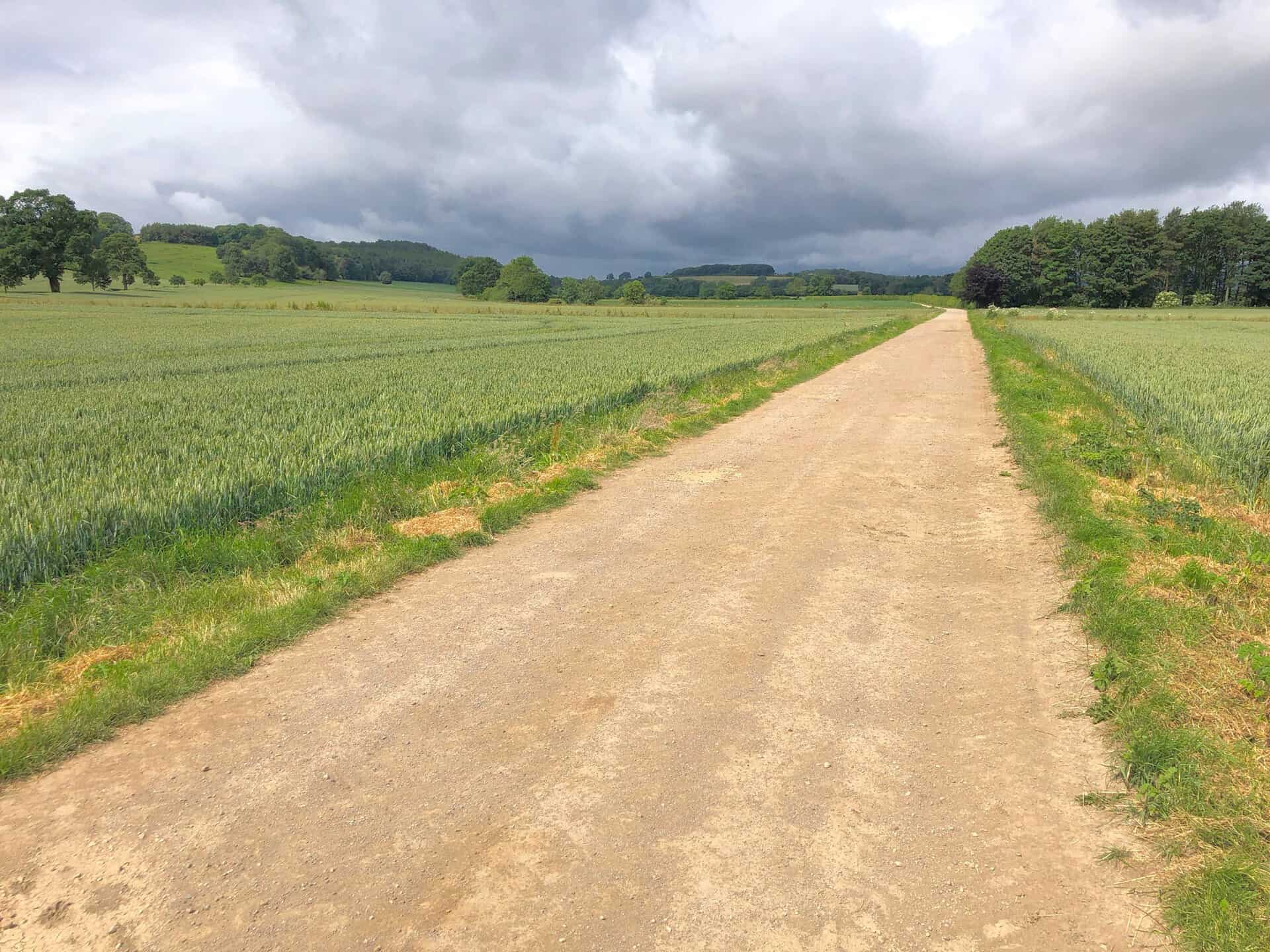
Farmland in the Howardian Hills.
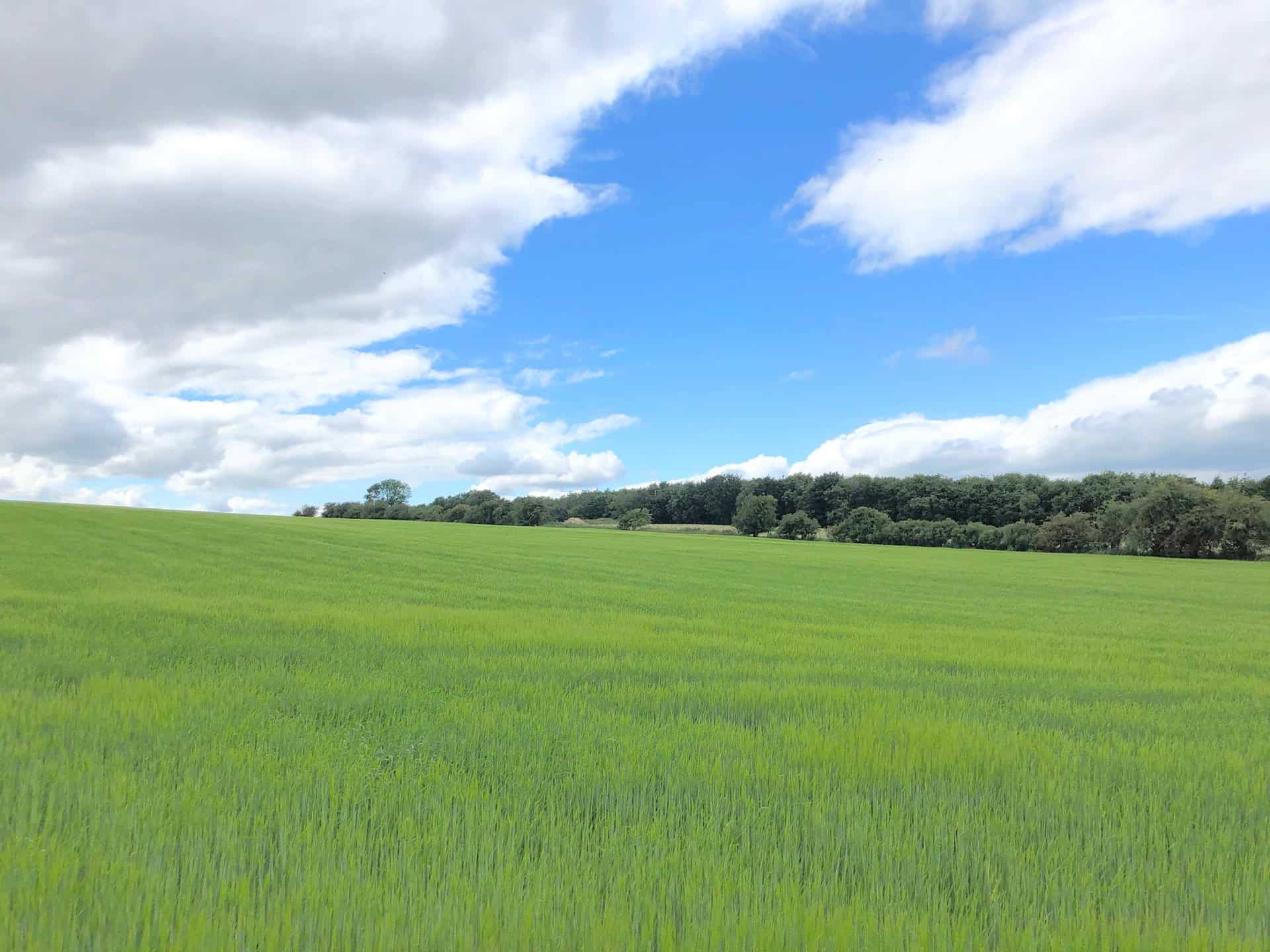
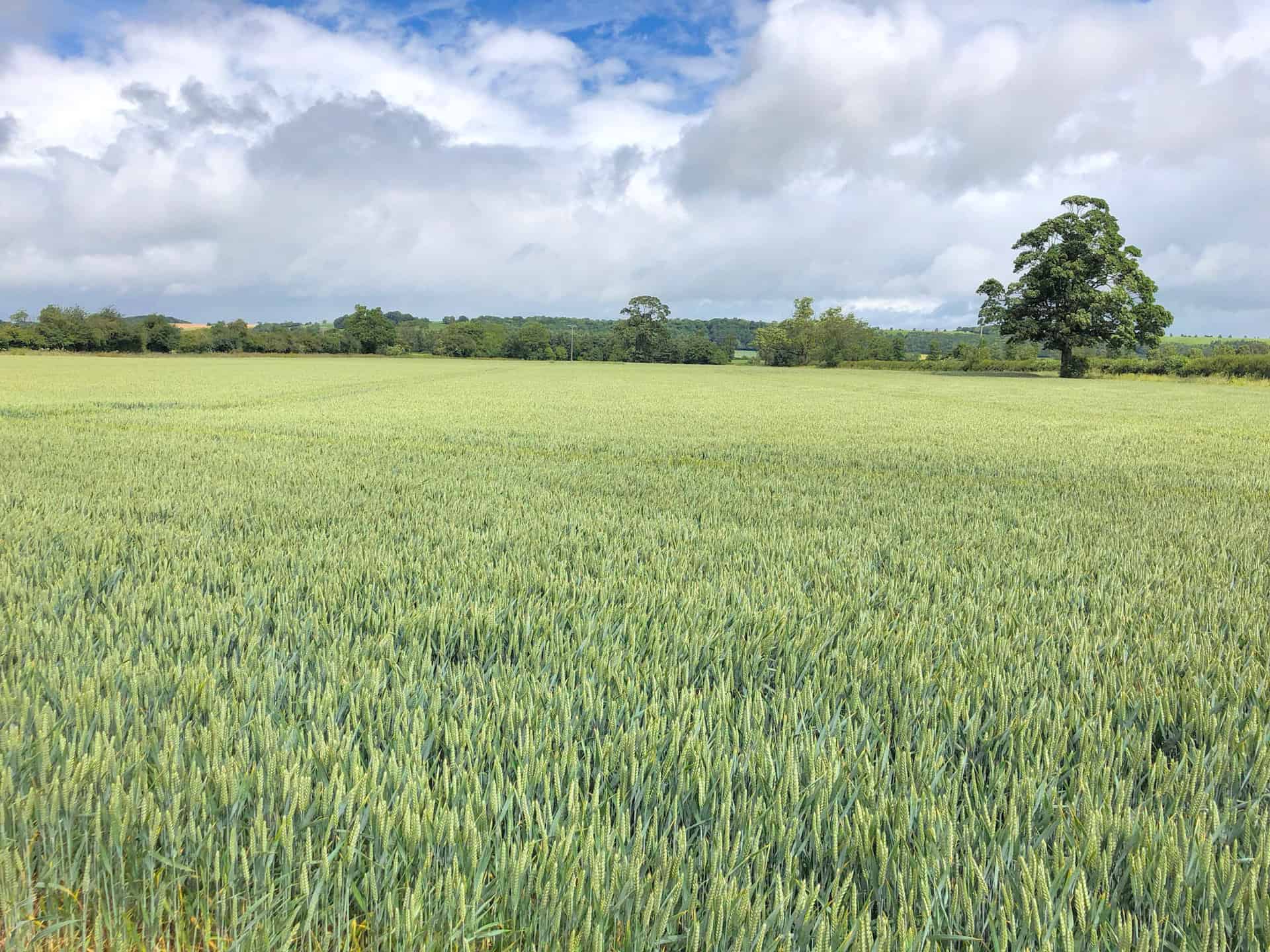
Beautiful house at Hovingham Spa.

Holy Cross Church, Gilling East
The Holy Cross Church in Gilling East boasts a rich history, with its origins dating back to around 1200. Initially featuring an arcade, the church later saw the addition of a chancel in the early 14th century and a southern arcade soon after. The late 15th century saw the construction of the impressive tower, which now houses three bells, inscribed with the years 1664, 1701, and 1773. Accessible via a spiral staircase, the tower also features an east-facing clock, installed in 1908. Additionally, the western end of the church holds the tomb of Sir Thomas Fairfax, a local landlord who passed away in 1828.
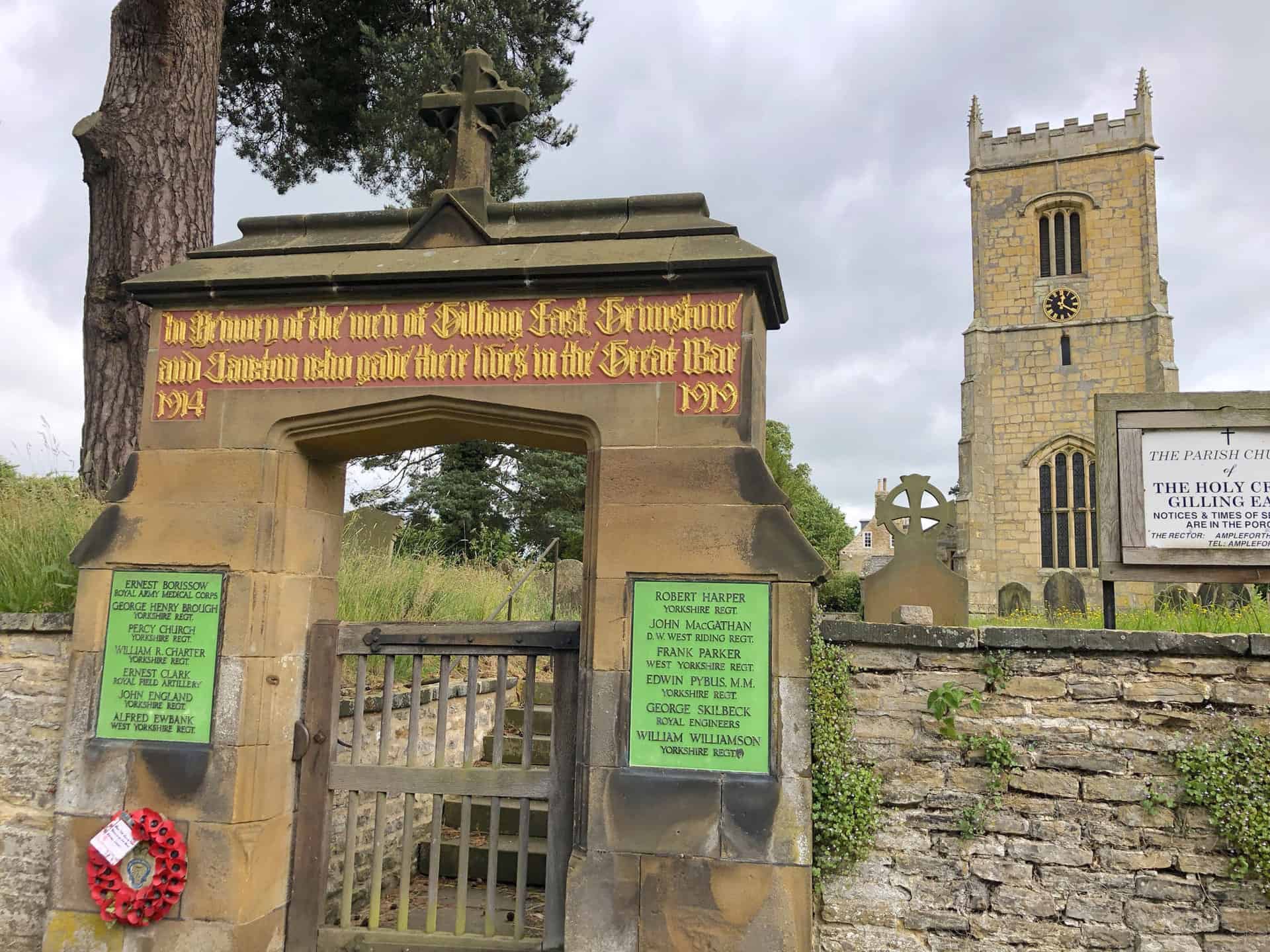
During the Victorian era, the church underwent restoration, leading to the installation of an organ chamber in 1883 and an east window with reticulated tracery in the 19th century. The current clock has an interesting connection to cricket, as Prince Ranjitsinhji, a frequent player in the village, raised funds for it through organising cricket matches. Recognising its historical and architectural significance, the Holy Cross Church was designated a Grade I listed building on 4 January 1955.
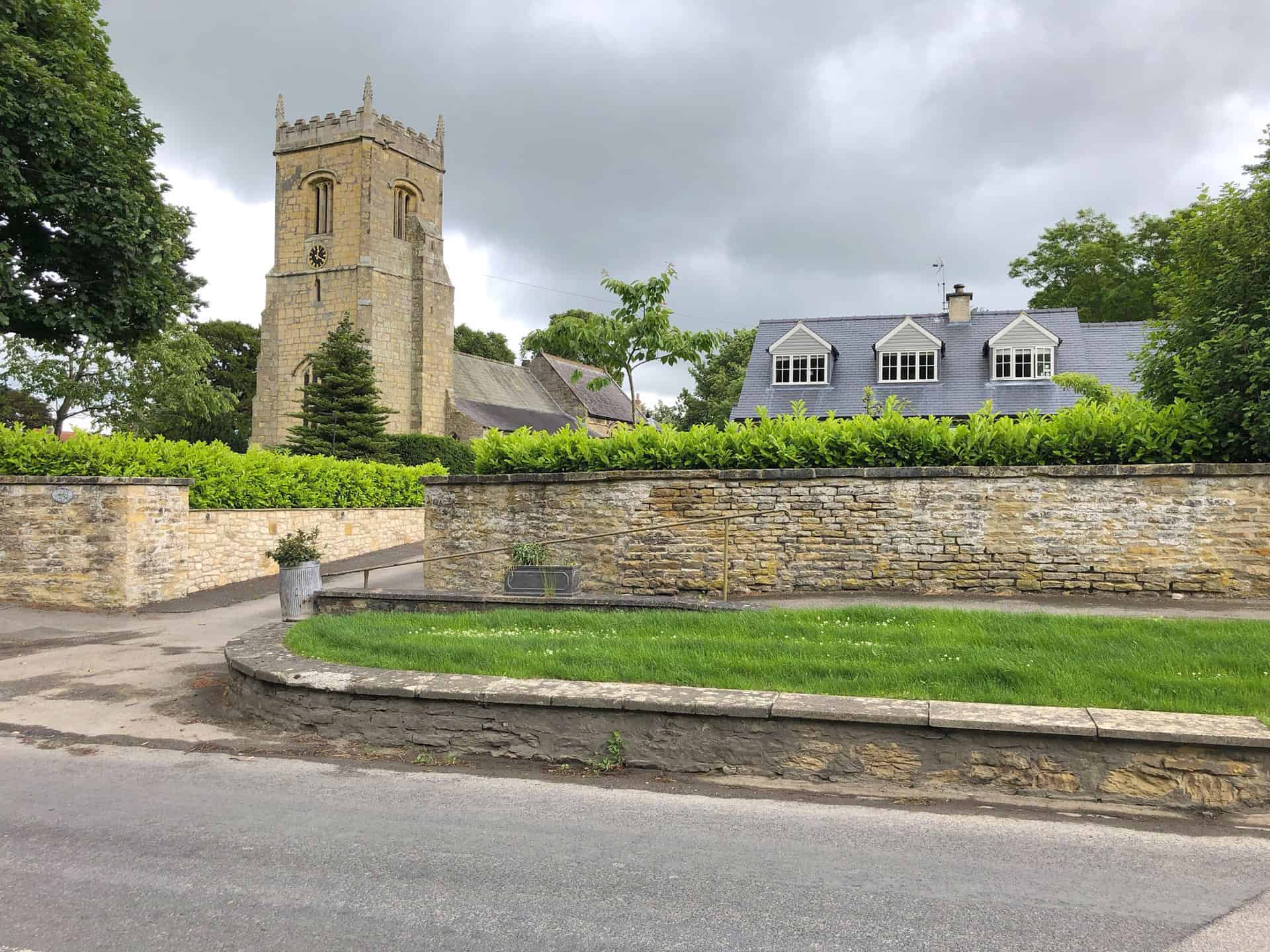
One of three fish ponds near Park Wood.
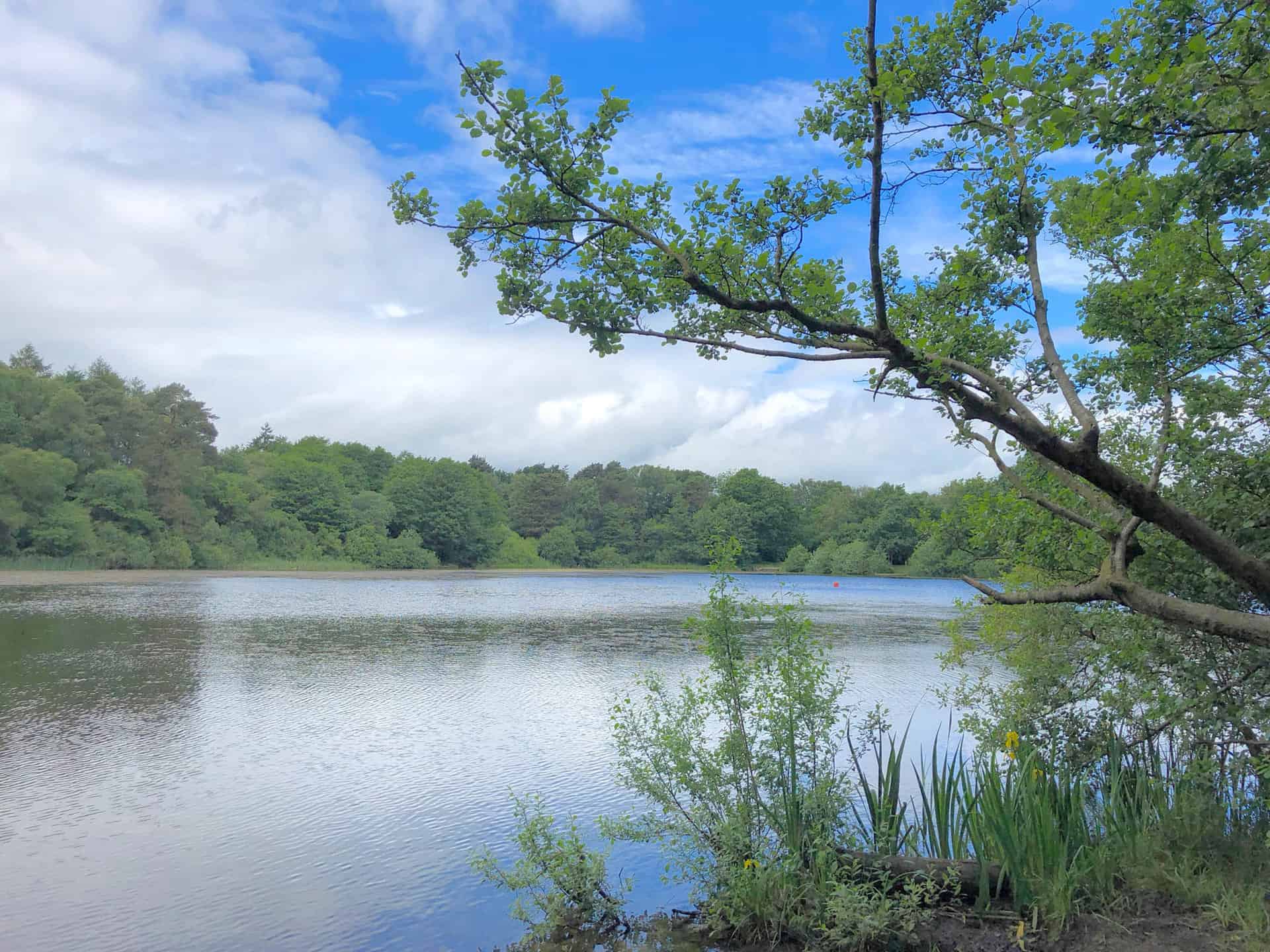
The Avenue, heading north-east to Gilling Park.
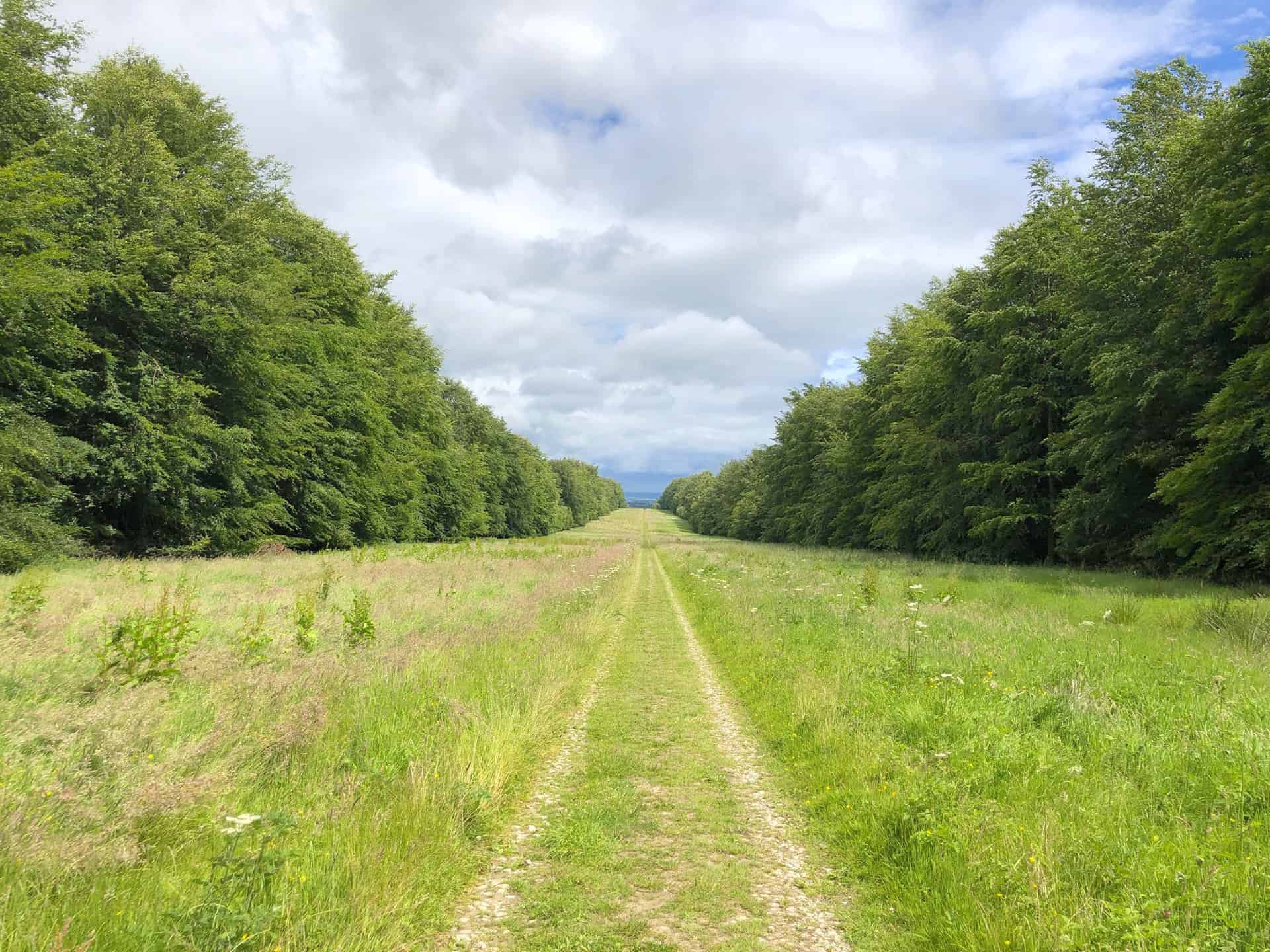
Gilling Castle
The origins of Gilling Castle date back to the 12th century when the Etton family first made it their home. It was Thomas de Etton who constructed the fortified manor house in the 14th century. This large, almost square tower remains the core of the present building.
In 1349, the manor of Gilling was settled upon the Fairfax family, in case the Ettons failed to produce a male heir. Consequently, Thomas Fairfax claimed the property in 1489. The castle underwent significant renovations under Sir William Fairfax in 1571, who rebuilt the first and second floors and added a staircase turret and an oriel window at the back. The Great Chamber was also a product of this time.
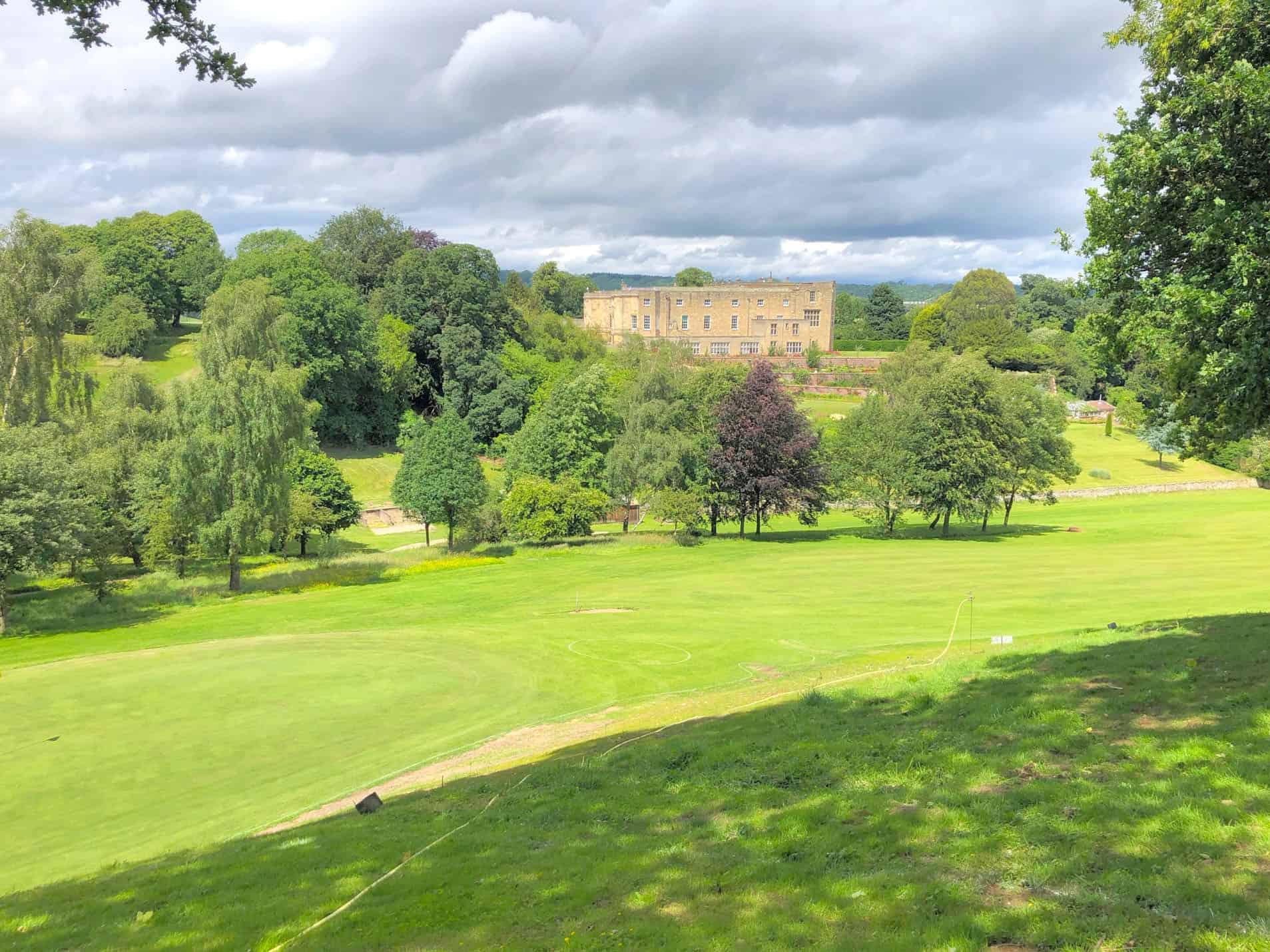
During the 18th century, Viscount Fairfax of Emley, the then-owner, remodelled much of the interior and added wings to enclose the front court. While some attribute these changes to architects John Vanbrugh or James Gibbs, a note by Francis Drake suggests Yorkshire gentleman architect William Wakefield was the mastermind behind the alterations. In the 1750s, John Carr made minor adjustments to the castle while working on the Fairfax family’s seat in York, Fairfax House.
The castle changed hands several times following the death of Mrs Barnes (Lavinia Fairfax) in 1885. Eventually, in 1929, Ampleforth Abbey acquired the property. Until 2018, Gilling Castle served as the home of St Martin’s Ampleforth, a preparatory school for Ampleforth College.
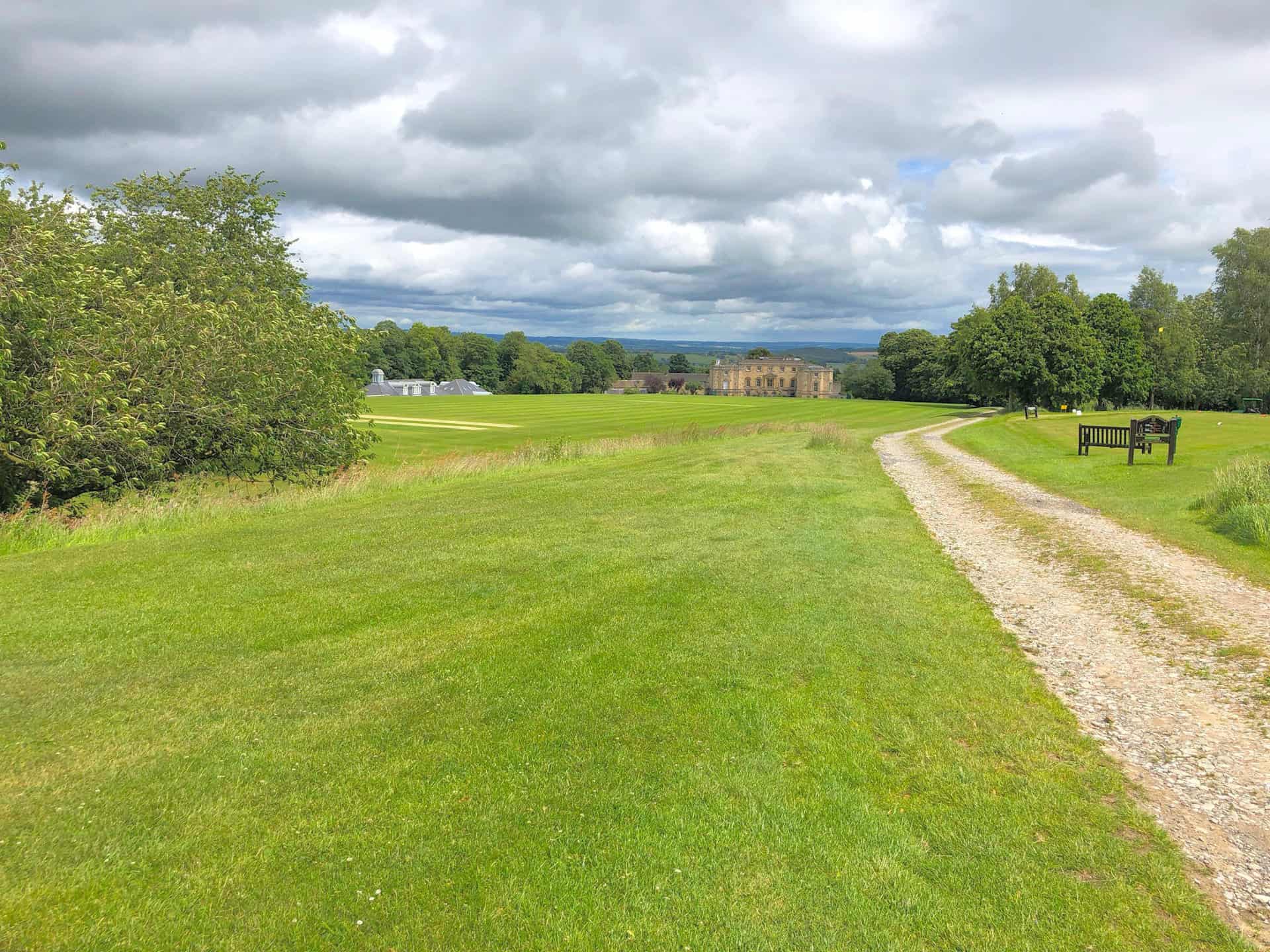
Amazon’s Top Walking Boots: Four Standout Choices for Men and Women
For walking and hiking, the right boots are essential for both comfort and safety. While Amazon boasts a wide range, certain boots emerge as top-sellers. From those, here are four I personally favour. As an Amazon affiliate, I may earn a small commission from any purchases made through the links provided. This helps support the upkeep of this website. Rest assured, you won’t pay a penny extra, but your purchase will contribute to keeping my site running smoothly. Happy walking!
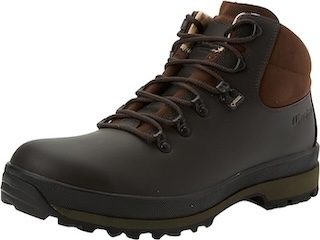
Berghaus Men’s Hillmaster II Gore-Tex Walking Boots
These fully waterproof leather walking boots feature a Gore-Tex lining, ensuring no water enters whilst allowing feet to breathe and stay cool. Made from full-grain leather, they promise unmatched durability and comfort. The boots come with memory foam tongues and cuffs that mould to your feet for a tailored fit, and the Vibram Hillmaster outsoles offer confidence on challenging terrains.

Salewa Men’s Mountain Trainer Mid Gore-Tex Walking Boots
Made from durable suede and abrasion-resistant textile, these men’s hiking boots are both lightweight and sturdy. The upper material is enhanced by a 360° full rubber sheath. Their dual-layer midsole with Bilight technology ensures ergonomic cushioning and grip, especially on extended hikes. The Vibram Wrapping Thread Combi outsoles allow a natural walking feel, and the Gore-Tex lining provides waterproofing, breathability, and optimal weather protection. Furthermore, the patented Salewa 3F system ensures flexibility, a secure heel grip, and a blister-free fit.
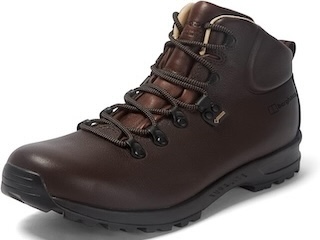
Berghaus Women’s Supalite II Gore-Tex Walking Boots
Specially designed for women, these hiking boots offer waterproofing and breathability, thanks to their Gore-Tex lining. Crafted from full-grain abrasion-resistant leather, they’re durable enough for the toughest hikes. The Supalite soles ensure stability and traction, and the EVA midsoles add comfort for extended walks.

Merrell Women’s Moab 3 Mid Gore-Tex Walking Boots
These hiking boots incorporate a Gore-Tex waterproof membrane, blending breathability with superior waterproof performance. The combination of pigskin leather and mesh on the uppers, along with the suede outer material, ensure durability and style. Enhancements include 100% recycled laces, webbing, and mesh lining. Additionally, bellows tongues, protective toe caps, and Vibram TC5+ rubber soles ensure protection and ease on any terrain.